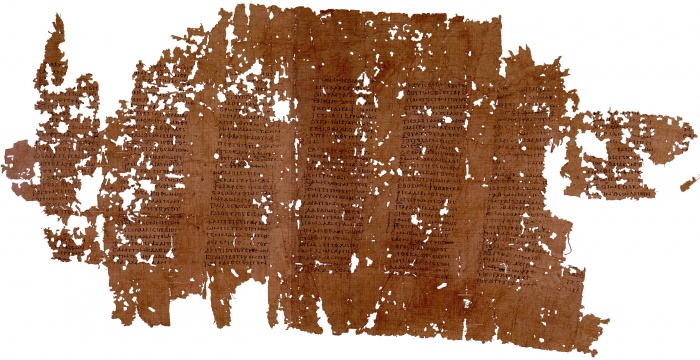plato in Barok 2014
re
counted as the distance from the beginning of the book, and lines as the
distance from the beginning of the page. It is not surprising because it is in
accord with inherent quality of its material medium -- a sheet of paper has a
shape which in turn shapes a body of a text. This tradition goes as far as to
the Ancient times and the bookroll in which we indeed find textual grids.
[](/File:Papyrus_of_Plato_Phaedrus.jpg)
[](/File:Papyrus_of_Plato_Phaedrus.jpg "Enlarge")
A crucial difference between print and digital is that text files such as HTML
documents nor markdown documents nor database-driven texts did inherit this
quality.
re to shape sonic and visual rendering of the text such
as whitespaces, commas, periods, HTML and markdown and other tags so that we
are left with the body of the text to count in. This would mean to render
operators unreferrable and count as in _scriptio continua_.
_Scriptio continua_ is a very old example of the linear onedimensional
treatment of the text. Let's look again at the bookroll with Plato's writing.
Even though it is 'designed' into grids on a closer look it reveals the lack
of any other structural elements -- there are no spaces, commas, periods or
line-breaks, the text is merely one flow, one long line.
_Phaedrus_ was written in the fourth century BC (this copy comes from the
second century AD). Word and paragraph separators were reintroduced much
later, between the second and s
Display 200 300 400 500 600 700 800 900 1000 ALL characters around the word.